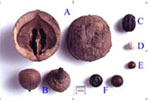- Latest Archaeology Updates
- Importance and applicability
- Famous Archaeologists
- Museums Collections
- Site Map
- World Heritage Sites
- World History Monuments
- Archaeological Organizations
- World Atlas of Archaeology
- Forensic Investigation and Geophysics
- Contact Us
- Movies based on Archaeology
- Frequently Asked Questions
- Archaeological discoveries
- Tell a Friend
- Archaeological Abbreviations
- Gallery Collections
- Famous-Museums site map
- Famous-archaeologists site map
- Archaeological Monuments site map
Archaeobotany was largely born from the practices of New Archaeology, which developed in the US in the 1970s as a reaction to a mainly cultural-historical approach to understanding the past. Proponents of New Archaeology advocated using processual methods to test hypotheses about the interaction between culture and biology, or a biocultural approach. Some archaeologists advocate a more holistic approach to bioarchaeology that incorporates critical theory and is more relevant to modern descent populations.
|
Archaeobotany
Archaeobotanists study plant remains that are preserved at archaeological sites including macroremains such as wood, seeds, nuts, etc. Because these are fragile, they are only preserved in special conditions (desiccated, charred, frozen, waterlogged, or preserved as impressions in baked clay or daub). Archaeobotanists also study microremains such as pollen, phytoliths, and spores, often found in the soils, as residues in pottery vessels, or in the sediments of stable waterbodies around archaeological sites. |
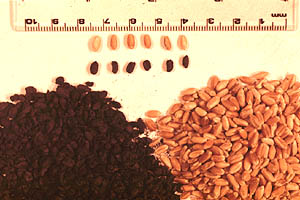 Archaeobotany Contains Following Chapter:
|
|
|
|
These collections house plant remains primarily from the southeastern United States and the circum Caribbean region, and include both prehistoric and historic period sites. As the program has developed and the sites have increased in number and volume, they have been inventoried and are being prepared for computerization following the same procedures used in the zooarchaeological computerization program. A modified version of ACCESS is also being planned for these collections.
|
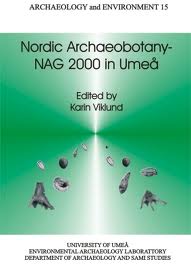
| Archaeobotany - James R. A. Greig - European Science Foundation, 1989.
Collections like the faunal and soils collections housed in the Environmental Archaeology Laboratory, both archaeological collections and modern reference collections of plants are curated. |
|
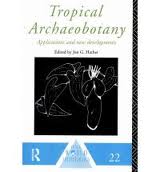
|
Tropical archaeobotany: applications and new developments- Jon G. Hather - 1994
Each chapter focuses on a different aspect of archaeobotanical research with an emphasis on techniques and methodology that have relevance beyond the regional scope of the book. |
|
- Archaeobotany in Wiki :
The term bioarchaeology was first coined by British archaeologist Grahame Clark in 1972 as a reference to zooarchaeology, or the study of animal bones from archaeological sites.
- Archaeobotany : Archaeobotany Students will use pictures of seeds, an activity sheet, and a graph to identify seven seeds and the conditions in which they grow. They will also infer ancient plant use by interpreting archaeobotanical samples and determine changing plant use by Native North Carolinians by interpreting a graph of seed frequency over time.
-
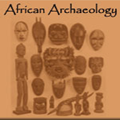 African Archaeology Africa has the longest record of human activity of any part of the world and along with its geographical extent; it contains an enormous archaeological resource. Scholars have studied Egyptology for centuries but archaeologists have only paid serious attention to the rest of the continent in more recent times.
African Archaeology Africa has the longest record of human activity of any part of the world and along with its geographical extent; it contains an enormous archaeological resource. Scholars have studied Egyptology for centuries but archaeologists have only paid serious attention to the rest of the continent in more recent times. -
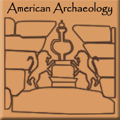 American Archaeology Archaeology of the Americas is the learning of the archaeology of North America, Central America (or Mesoamerica), South America and the Caribbean, which is to say, the pre-history and Pre-Columbian history of Native American peoples.
American Archaeology Archaeology of the Americas is the learning of the archaeology of North America, Central America (or Mesoamerica), South America and the Caribbean, which is to say, the pre-history and Pre-Columbian history of Native American peoples. -
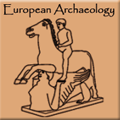 European Archaeology In terms of area, Europe is the world's second smallest continent, with an area of 10,400,000 kmē (4,000,000 square miles), making it slightly larger than Australia.
European Archaeology In terms of area, Europe is the world's second smallest continent, with an area of 10,400,000 kmē (4,000,000 square miles), making it slightly larger than Australia. -
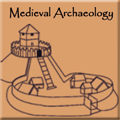 Medival archaeology The period covers the commotion caused by the fall of the Medival archaeology Roman Empire and cultures such as the Vikings, Saxons and Franks.
Medival archaeology The period covers the commotion caused by the fall of the Medival archaeology Roman Empire and cultures such as the Vikings, Saxons and Franks. -
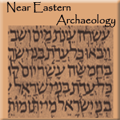 Near Eastern Archaeology Near Eastern Archaeology is a wide generalised application, and is divided into further regional sub-branches, the archaeology of modern states in the region or along broad thematic lines.
Near Eastern Archaeology Near Eastern Archaeology is a wide generalised application, and is divided into further regional sub-branches, the archaeology of modern states in the region or along broad thematic lines. -
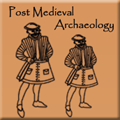 Post Medieval Archaeology The Post Medieval Archaeology is considered as a bi-annual journal study of the material evidence of European society. This period saw the conversion of medieval to industrial society.
Post Medieval Archaeology The Post Medieval Archaeology is considered as a bi-annual journal study of the material evidence of European society. This period saw the conversion of medieval to industrial society. -
 Modern Archaeology In contrast to the antiquarianism of classical archaeology, anthropological archaeology today is concerned with culture history (i.e., the chronology of events and cultural traditions) and the explanation of cultural processes.
Modern Archaeology In contrast to the antiquarianism of classical archaeology, anthropological archaeology today is concerned with culture history (i.e., the chronology of events and cultural traditions) and the explanation of cultural processes.


